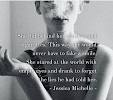
When I arrived at Nagasaki from Sasebo, I looked down at the city from the top of a low hill. I saw some men wearing white masks. They were working near a ditch full of burning coal.Joe O'Donnell (1922 - 2007), American documentarian, photojournalist. His most famous work was documenting photographically the immediate aftermath of the atomic bomb explosions at Nagasaki and Hiroshima, Japan, in 1945 and 1946 as a Marine photographer.
I noticed a boy about ten years old walking by. He was carrying a baby slung on his back. In those days, in Japan, it was more common to see children playing in vacant lots with their little brothers or sisters on their backs, but this boy is clearly different. I could see that he had come to this burning ground for serious purpose. He was barefoot. When he reached the edge of the crematory, he stopped and peered ahead with a fixed expression. The infant’s head was tipped back as if the baby were fast sleep.
The boy stood there next to the area for about ten minutes. The men in white masks walked over to him and gently began undoing the cords that were holding the baby. Then I first realized that the baby was already dead. The men held the boy by the hands and feet and place it gently on the hot coals.
The infant boy made a hissing sound as it was placed in the fire. Then it lit up in a brilliant flames like a deep red of the setting sun. The boy stood there erect and motionless with his innocent cheeks shining scarlet. I noticed that the lips of the boy were also streaked with red as he watched the flames. He was biting his lower lip so hard that it shone with blood. The flames burned low like the sun going down, and the boy turned around and walked silently away from the burning pit."

Original caption: In New York's Times Square a white-clad girl clutches her purse and skirt as an uninhibited sailor plants his lips squarely on hers
"In Times Square on V.J. Day, I saw a sailor running along the street grabbing every girl in sight. Whether she was a grandmother, stout, thin, old, didn't make any difference." I was running ahead of him with my Leica looking back over my shoulder. Then suddenly, in a flash, I saw something white being grabbed. I turned around and clicked the moment the sailor kissed the nurse...I took exactly four pictures. It was done within a few seconds." Alfred Eisenstaedt (1898 - 1995), photojournalist, famous for the V-J Day in Times Square, published in Life in 1945.


No comments:
Post a Comment